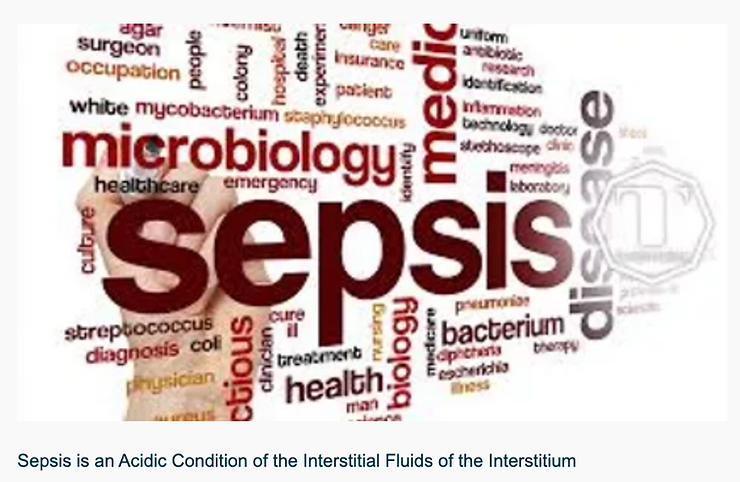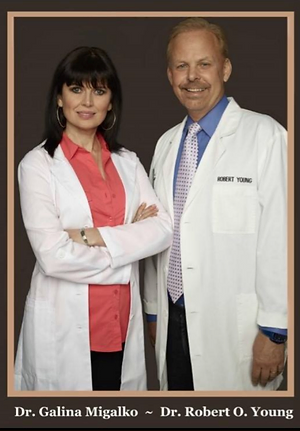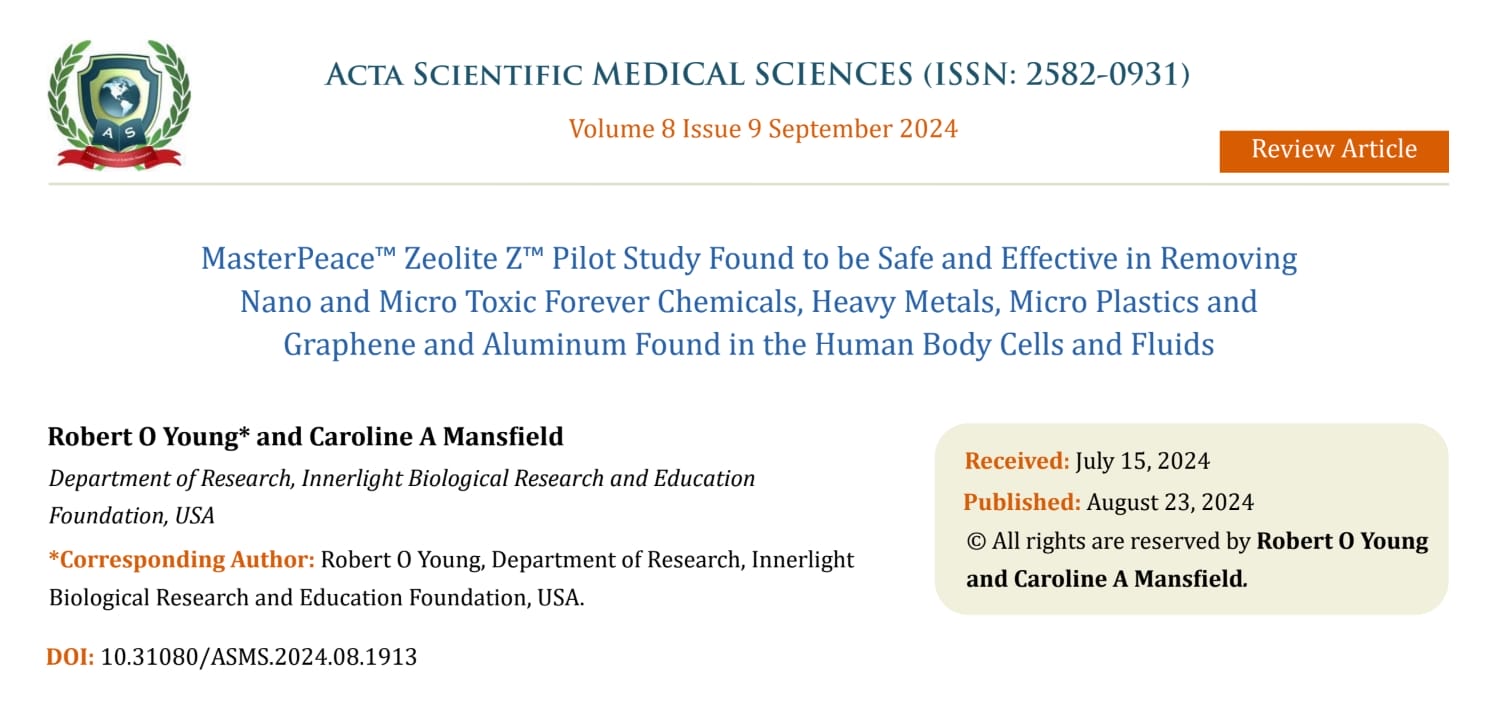What is the Leading Cause of Preventable Death in the World Today?
Updated: Jan 29, 2020

Sepsis is an Acidic Condition of the Interstitial Fluids of the Interstitium
Sepsis or systemic metabolic acidosis begins in the Interstitial Fluids of the Interstitium. Systemic acidosis which leads to Sepsis is the leading cause of death in the World today and is NOT caused by a so-called bacterial, fungal or viral infection.

Does Bacteria Cause Sepsis?

Bacteria, including Escherichia coli, Staphylococcus aureus, Streptococcus, including Methicillin-resistant Staphylococcus aureus (MRSA) are all symptoms of cellular transformation or breakdown of the body cells which then gives birth to these bacteria and are NOT the cause of Sepsis. These bacterias do NOT cause Sepsis but are nothing more than the symptoms of a highly acidic interstitial fluid environment of the Interstitium and then the blood plasma! A very, very important distinction!!!!!!

This is especially important when the Physician is considering the use of highly acidic antibiotic treatments. You might kill some bacteria but in the end you run the risk of killing the patient, which happens in 40 percent of all Sepsis cases!
This is ALL preventable and treatable when you understand the true cause of Sepsis and you can quantify the chemistry of the blood, interstitial fluids and the intracellular fluids, including their pH, for comparison and to accurately determine compensated or decompensated acidosis of the interstitial fluids of the Interstitium, and the blood plasma..


Is There A Treatment for Sepsis?
Absolutely! Once the medical community understands the true cause of Sepsis they will then hopefully pursue treatments for their patients which will include alkalizing infusions of sodium and potassium bicarbonate. This approach of alkalizing will buffer the dietary, metabolic, respiratory and environmental acids that are causing the symptoms of Sepsis rather than the current treatment protocol of highly acidic antibiotics which just adds more toxins to an already dangerous acidic state to ALL body fluids.
Where Can I Go To Have My Interstitial Body Fluids Tested?
Currently, Universal Medical Imaging, in California (www.universalmedicalimagaing.com) is the only group that I know of that is testing the chemistry of the interstitial fluids and the blood plasma to determine the pH and other chemistry of these specific body fluids. These tests are all non-invasive and could be integrated into hospitals and clinics around the World NOW! The result would be better diagnostics and better treatments. In other words it would simply save lives and needless suffering and death!

Is There a Way to Prevent and/or Cure Sepsis?
My hope and prayer is this type of non-invasive biological testing and alkalizing treatment will happen sooner than later to put an end to the massive loss of life around the World, each and every day. (Over a million people are diagnosed with Sepsis in the USA alone and up to 50 percent of them die in our hospitals!)[11-15]

I Want to Learn More!
To learn more about our published research on the interstitial fluids of the Interstitium, in the prevention, treatment and reversal of any sickness or disease go to: www.drrobertyoung.com

Dr. Galina Migalko and I presented our research and findings on Sepsis and its prevention and cure at the 2nd International Annual Congress on Bacterial, Viral and Infectious Diseases, held in Dubai, UAE, on June 18th and 19th, 2019.

To request information on this Conference please email me at: phmiraclelife@gmail.com

www.drrobertyoung.com

References
[1] “Sepsis Questions and Answers”. cdc.gov. Centers for Disease Control and Prevention (CDC). 22 May 2014. Archived from the original on 4 December 2014. Retrieved 28 November 2014.
[2] Jui, Jonathan; et al. (American College of Emergency Physicians) (2011). “Ch. 146: Septic Shock”. In Tintinalli, Judith E.; Stapczynski, J. Stephan; Ma, O. John; Cline, David M.; Cydulka, Rita K.; Meckler, Garth D. (eds.). Tintinalli’s Emergency Medicine: A Comprehensive Study Guide (7th ed.). New York: McGraw-Hill. pp. 1003–14. Archived from the original on 15 January 2014. Retrieved 11 December 2012 – via AccessMedicine.
[3] Deutschman CS, Tracey KJ (April 2014). “Sepsis: current dogma and new perspectives”. Immunity. 40 (4): 463–75. doi:10.1016/j.immuni.2014.04.001. PMID 24745331.
[4] Singer M, Deutschman CS, Seymour CW, Shankar-Hari M, Annane D, Bauer M, Bellomo R, Bernard GR, Chiche JD, Coopersmith CM, Hotchkiss RS, Levy MM, Marshall JC, Martin GS, Opal SM, Rubenfeld GD, van der Poll T, Vincent JL, Angus DC (February 2016). “The Third International Consensus Definitions for Sepsis and Septic Shock (Sepsis-3)”. JAMA. 315 (8): 801–10. doi:10.1001/jama.2016.0287. PMC 4968574. PMID 26903338.
[5] Rhodes A, Evans LE, Alhazzani W, Levy MM, Antonelli M, Ferrer R, et al. (March 2017). “Surviving Sepsis Campaign: International Guidelines for Management of Sepsis and Septic Shock: 2016” (PDF). Intensive Care Medicine. 43(3): 304–377. doi:10.1007/s00134-017-4683-6. PMID 28101605.
[6] Jawad I, Lukšić I, Rafnsson SB (June 2012). “Assessing available information on the burden of sepsis: global estimates of incidence, prevalence and mortality”. Journal of Global Health. 2 (1): 010404. doi:10.7189/jogh.01.010404. PMC 3484761. PMID 23198133.
[7] Martin GS (June 2012). “Sepsis, severe sepsis and septic shock: changes in incidence, pathogens and outcomes”. Expert Review of Anti-Infective Therapy. 10(6): 701–6. doi:10.1586/eri.12.50. PMC 3488423. PMID 22734959.
[8] Dellinger RP, Levy MM, Rhodes A, Annane D, Gerlach H, Opal SM, Sevransky JE, Sprung CL, Douglas IS, Jaeschke R, Osborn TM, Nunnally ME, Townsend SR, Reinhart K, Kleinpell RM, Angus DC, Deutschman CS, Machado FR, Rubenfeld GD, Webb SA, Beale RJ, Vincent JL, Moreno R (February 2013). “Surviving sepsis campaign: international guidelines for management of severe sepsis and septic shock: 2012”(PDF). Critical Care Medicine. 41 (2): 580–637. doi:10.1097/CCM.0b013e31827e83af. PMID 23353941. Archived from the original (PDF) on 2 February 2015.
[9] Martin GS, Mannino DM, Eaton S, Moss M (April 2003). “The epidemiology of sepsis in the United States from 1979 through 2000”. The New England Journal of Medicine. 348 (16): 1546–54. doi:10.1056/NEJMoa022139. PMID 12700374.
[10] Poltorak A, Smirnova I, He X, Liu MY, Van Huffel C, McNally O, Birdwell D, Alejos E, Silva M, Du X, Thompson P, Chan EK, Ledesma J, Roe B, Clifton S, Vogel SN, Beutler B (September 1998). “Genetic and physical mapping of the Lps locus: identification of the toll-4 receptor as a candidate gene in the critical region”. Blood Cells, Molecules & Diseases. 24 (3): 340–55. doi:10.1006/bcmd.1998.0201. PMID 10087992.
[11] Causes of Death Collaborators Global, regional, and national age-sex-specific mortality for 282 causes of death in 195 countries and territories, 1980–2017: a systematic analysis for the Global Burden of Disease Study 2017. Lancet. 2018; 392: 1736-1788
[12] DALYs and HALE Collaborators Global, regional, and national disability-adjusted life-years (DALYs) for 359 diseases and injuries and healthy life expectancy (HALE) for 195 countries and territories, 1990–2017: a systematic analysis for the Global Burden of Disease Study 2017. Lancet. 2018; 392: 1859-1922
[13] Disease and Injury Incidence and Prevalence Collaborators
Global, regional, and national incidence, prevalence, and years lived with disability for 354 diseases and injuries for 195 countries and territories, 1990–2017: a systematic analysis for the Global Burden of Disease Study 2017. Lancet. 2018; 392: 1789-1858
[14] Mortality Collaborators Global, regional, and national age-sex-specific mortality and life expectancy, 1950–2017: a systematic analysis for the Global Burden of Disease Study 2017. Lancet. 2018; 392: 1684-1735
[15] Risk Factor Collaborators Global, regional, and national comparative risk assessment of 84 behavioural, environmental and occupational, and metabolic risks or clusters of risks for 195 countries and territories, 1990–2017: a systematic analysis for the Global Burden of Disease Study 2017. Lancet. 2018; 392: 1923-1994




